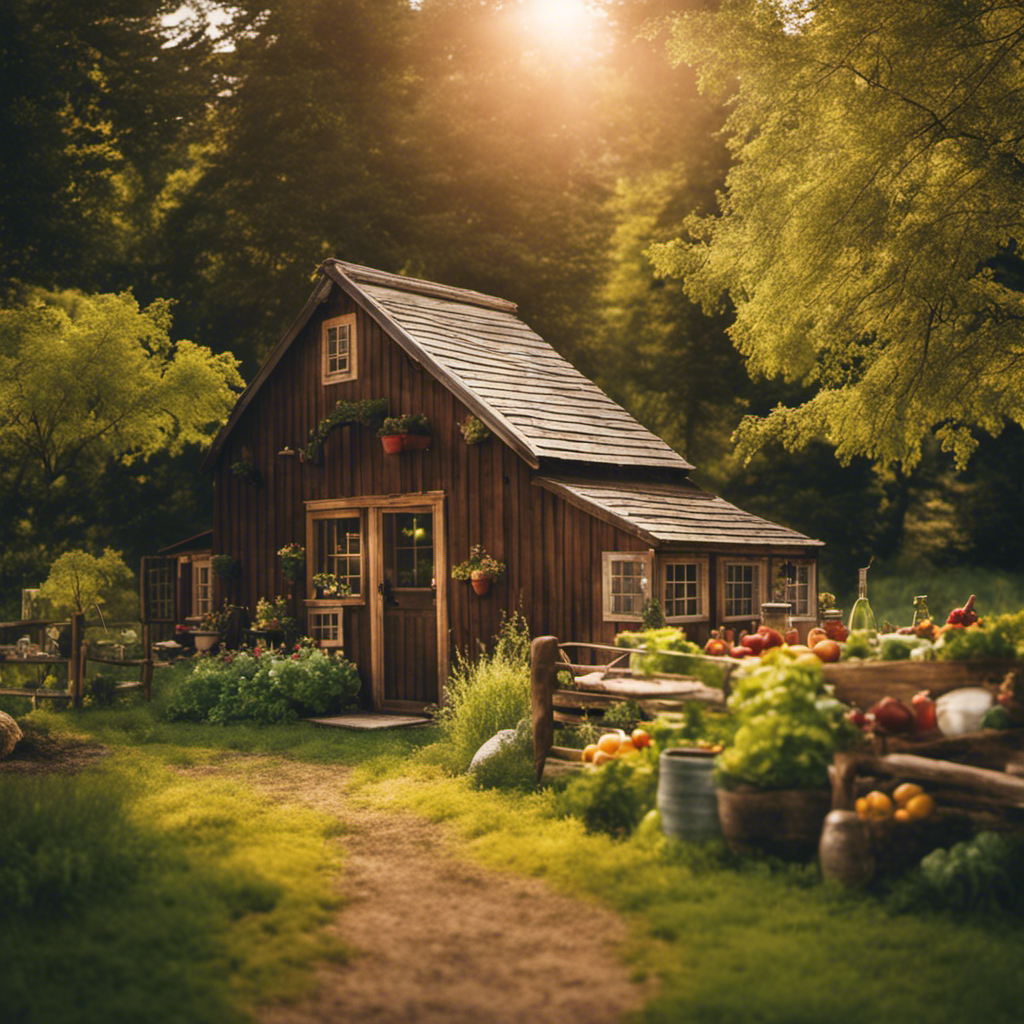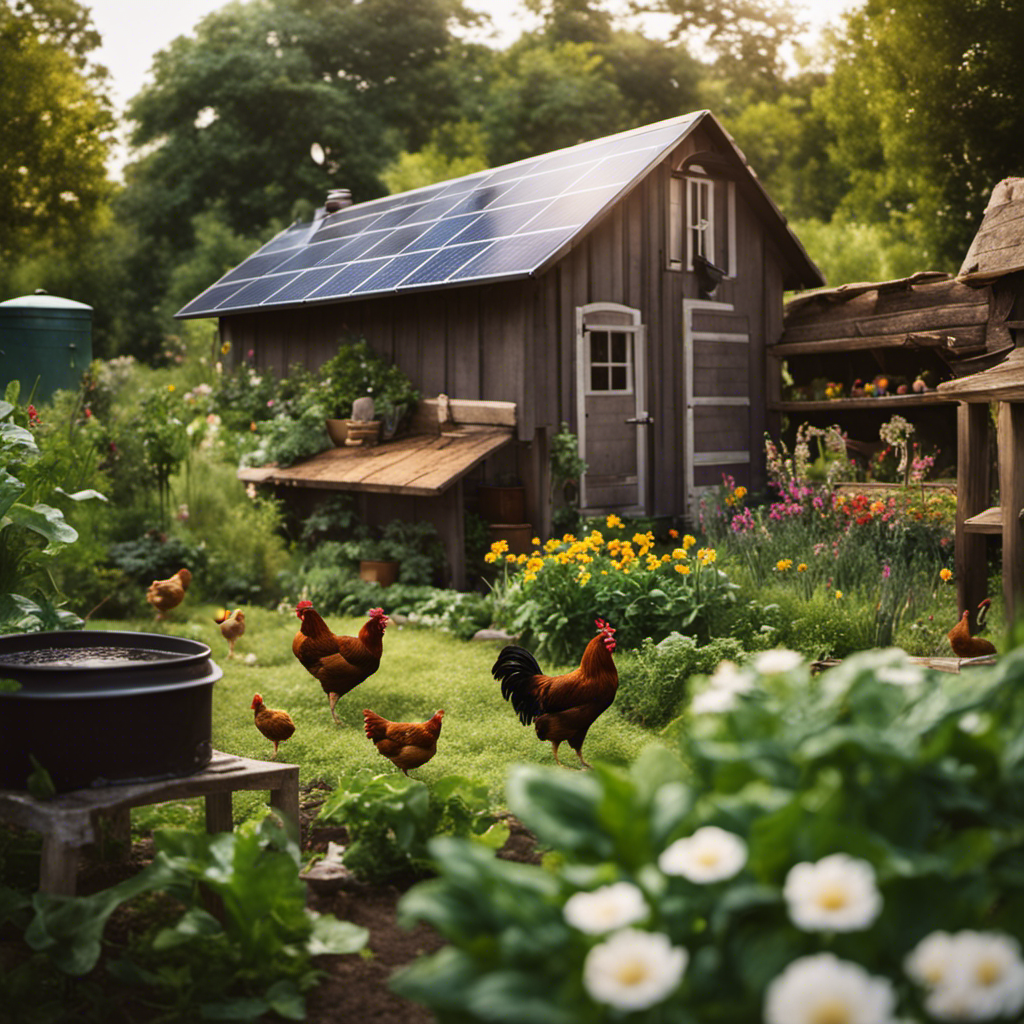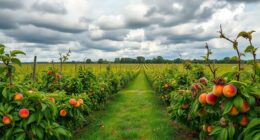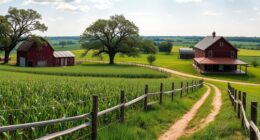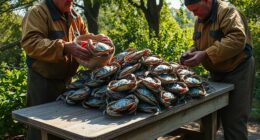Sustainable fencing options like hedge, wattle, and recycled wire help you secure your property while supporting the environment. By choosing native plants or fast-growing shrubs for hedges, you create a living barrier that benefits wildlife and improves air quality. Wattle fences made from woven branches are biodegradable and blend naturally into surroundings. Using recycled wire reduces waste and can be combined with climbing plants to boost biodiversity. Keep exploring to discover how these eco-friendly choices can transform your fencing approach.
Key Takeaways
- Hedge fencing provides a living barrier that supports biodiversity and enhances ecosystem health.
- Wattle fences made from woven branches are biodegradable and made from renewable, locally sourced materials.
- Recycled wire fences reduce environmental impact and can support climbing plants for additional wildlife habitat.
- Using FSC-certified wood or native plants in fencing promotes sustainable forestry and habitat connectivity.
- Combining hedge, wattle, and wire techniques creates eco-friendly fences that balance enclosure with ecological benefits.
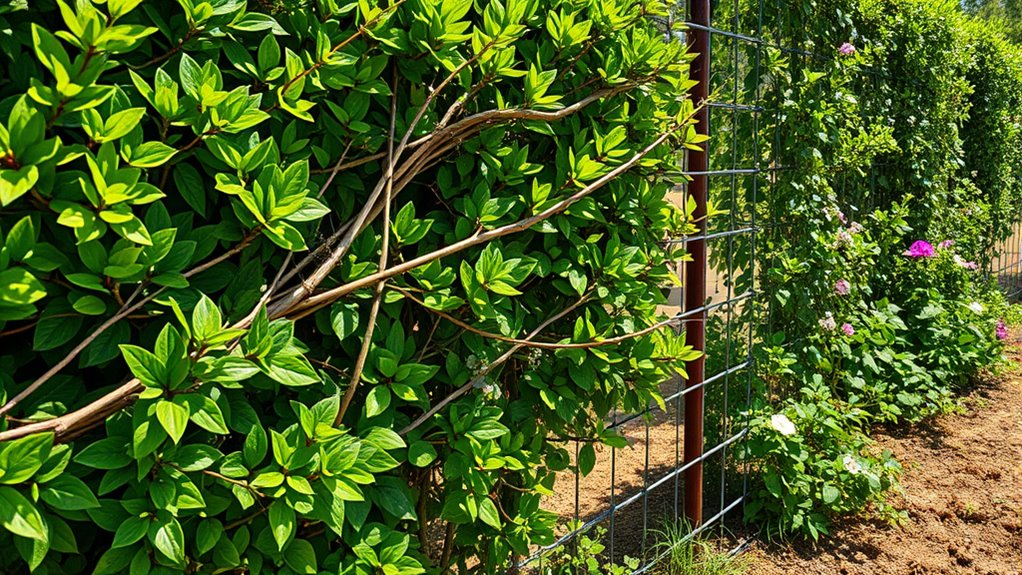
Sustainable fencing offers an eco-friendly way to enclose your property while minimizing environmental impact. When you choose fencing options like hedges, wattle, or wire constructed from renewable materials, you’re supporting healthier ecosystems and promoting biodiversity. Unlike traditional fences that often block wildlife movement, sustainable fencing can incorporate wildlife corridors, allowing animals to pass freely and safely through your land. This consideration is crucial for maintaining local flora and fauna, particularly in areas where habitat fragmentation is a concern. By selecting materials that are renewable, such as FSC-certified wood or fast-growing shrub species, you help reduce the demand for non-renewable resources and lessen your carbon footprint.
Choose renewable materials like hedges, wattle, or recycled wire to create eco-friendly, wildlife-friendly fencing.
When you opt for a hedge as your fencing solution, you’re creating a living barrier that offers multiple benefits. Hedges act as natural wildlife corridors, enabling small mammals, birds, and insects to move through your landscape unimpeded. They also improve air quality, provide shade, and contribute to soil health. Using native or locally adapted plant species ensures that your hedge thrives with minimal maintenance, water, and fertilizers, further supporting sustainability. Over time, your hedge becomes an integral part of the environment, offering habitat and food sources for various species while serving as an effective boundary. Incorporating Chia seeds into your gardening practices can enhance soil health and plant growth due to their nutrient-rich profile.
Wattle fencing, made from woven branches and flexible twigs, is another excellent choice rooted in renewable materials. It’s a traditional method that uses locally sourced timber or coppiced wood, which regrows quickly and can be harvested sustainably. Wattle fences are durable yet biodegradable, blending seamlessly into natural surroundings. They also facilitate wildlife movement when designed with gaps or openings, creating natural corridors that connect different habitats. By choosing wattle, you’re not only creating a sturdy enclosure but also supporting sustainable forestry practices that favor renewable resource management.
Wire fences, when combined with eco-conscious practices, can also be part of a sustainable fencing strategy. Using wire made from recycled metals reduces environmental impact, and designing the fence with wider gaps or incorporating plant-based barriers can support wildlife corridors. Additionally, you can grow climbing plants or vines along wire fences, which enhances habitat complexity and provides additional food and shelter for birds and insects. When you prioritize recycled materials and integrate plant elements, your wire fencing becomes more than just a boundary—it transforms into a living, eco-friendly feature that supports biodiversity.
In all, choosing sustainable fencing options like hedges, wattle, and recycled wire helps you create a functional boundary that respects and enhances the environment. By considering wildlife corridors and renewable materials, you’re not just enclosing your property—you’re actively contributing to a healthier, more resilient ecosystem.
Frequently Asked Questions
What Are the Maintenance Costs for Each Fencing Type?
The maintenance costs for each fencing type vary based on your needs. Hedge fencing generally has low costs, needing occasional trimming and monitoring for pests, making it affordable long-term. Wattle fencing requires periodic repairs and replacements, which can add to costs. Wire fencing involves initial investment and some upkeep, like checking for rust or damage. Overall, hedge fencing has the lowest ongoing maintenance, while wire and wattle involve higher maintenance requirements and costs.
How Do Fencing Options Impact Local Wildlife?
Imagine you’re a modern-day Robin Hood, protecting your land’s wildlife. Your fencing choices directly impact local animals by either creating wildlife corridors or causing habitat fragmentation. Hedges and wattles offer natural passages, fostering biodiversity, while wire fences can trap or block wildlife movement. Opting for sustainable fencing helps maintain ecological balance, ensuring animals can roam freely and thrive. Your decisions shape the health of the environment around you.
Are There Any Legal Restrictions on Fencing Materials?
Yes, there are legal regulations and material restrictions on fencing. You need to check local rules, as some areas ban certain materials like barbed wire or require specific types for safety reasons. Regulations often aim to protect wildlife and neighbors, so make certain your fencing complies with these standards. Always consult your local authority or planning department before installing fencing to avoid potential legal issues.
What Is the Typical Lifespan of Each Fencing Material?
You can expect hedge fencing to last around 10 to 20 years, depending on plant type and maintenance, offering moderate durability. Wattle fences typically have a lifespan of 5 to 10 years, as they degrade faster over time. Wire fencing tends to be the most durable, with material longevity of 20 to 30 years if properly maintained. Your choice affects overall fence durability and longevity, so consider how long you want your fence to last.
How Do Fencing Choices Affect Property Value?
Your fencing choices considerably impact your property’s value by enhancing property aesthetics and fencing security. A well-maintained hedge or attractive wattle can boost curb appeal, making your home more inviting. Conversely, sturdy wire fencing ensures security and privacy, appealing to potential buyers. Thoughtful fencing options can increase your property’s market value, showcasing your commitment to sustainability and safety, ultimately attracting more interest and potentially higher offers.
Conclusion
As you consider your fencing options, remember that each choice holds the potential to transform your landscape sustainably. Will you opt for the timeless charm of a hedge, the rustic appeal of wattle, or the practicality of wire? The right decision could shape your environment for years to come — but the real question is, which one will you choose to create a truly eco-friendly boundary? The answer awaits, just beyond the horizon.



